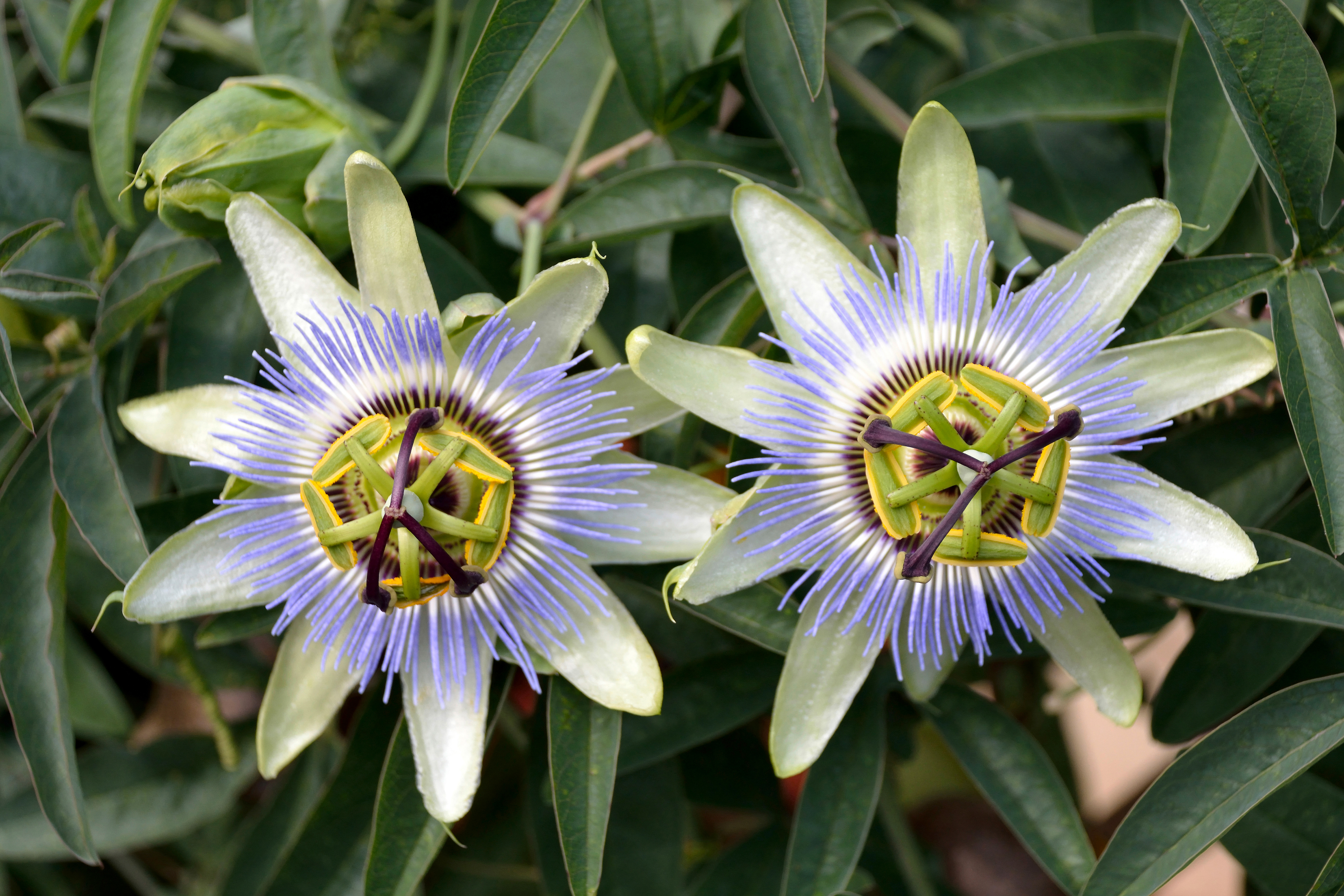Blue passionflower
(Passiflora caerulea)

Description
Passiflora caerulea, commonly known as blue passionflower or blue crown, is a flowering plant native to South America, but can now be found all over the world. This plant is a member of the Passifloraceae family, which includes over 500 species of vines, shrubs, and trees. It is one of the most popular and easily recognized species of passionflower due to its striking blue and white flowers and unique fruit. In this article, we will explore the characteristics, growing requirements, and uses of Passiflora caerulea. Taxonomy and Nomenclature: The genus Passiflora was first described by Linnaeus in 1753 and consists of about 500 species that are distributed in tropical and subtropical regions of the world. The name Passiflora comes from the Latin word "passio" meaning "suffering" and "flos" meaning "flower." This name was given by early Spanish missionaries who saw the flower's various parts as symbols of the passion of Christ. Passiflora caerulea was first described by Carolus Linnaeus in 1753, and its name is derived from the Latin words "caeruleus," meaning "blue," and "folium," meaning "leaf." The plant is commonly referred to as blue passionflower or blue crown due to the striking blue and white flowers that crown the plant. Description: Passiflora caerulea is a vigorous climbing vine that can reach up to 10 meters in height. The leaves are evergreen and alternate, with three-lobed, dark green leaves that can grow up to 15 cm long and 10 cm wide. The tendrils of the plant help it climb and anchor itself to other structures. The stems of the plant are smooth, and young stems are green, while older stems are brown and woody. The flowers of Passiflora caerulea are the most distinctive feature of the plant. The flowers are large, measuring up to 10 cm in diameter, and have a striking blue and white coloration. The corolla is made up of five petals, with the outermost petals being blue and the innermost petals being white. The center of the flower consists of a prominent and complex arrangement of stamens and pistils, which are often used to identify the species. The fruit of Passiflora caerulea is a yellow or orange egg-shaped berry that can reach up to 6 cm in length. The fruit is edible but is not commonly eaten due to its sour taste. Distribution and Habitat: Passiflora caerulea is native to South America and can be found from Brazil to Argentina. It grows in a variety of habitats, including forest edges, disturbed areas, and along rivers and streams. The plant is now widely cultivated throughout the world and can be found in many temperate and subtropical regions. Growing Requirements: Passiflora caerulea is a relatively easy plant to grow, but it does have specific requirements. The plant prefers full sun to partial shade and well-drained soil that is rich in organic matter. The soil pH should be slightly acidic, between 6.0 and 6.5. The plant is relatively drought-tolerant but prefers regular watering during the growing season. Passiflora caerulea is a climbing vine that requires support to grow, such as a trellis or arbor. The plant can be pruned to control its growth and promote bushiness. The vine is relatively hardy and can survive temperatures down to -10°C, but it may lose its leaves during cold spells.
Taxonomic tree:







